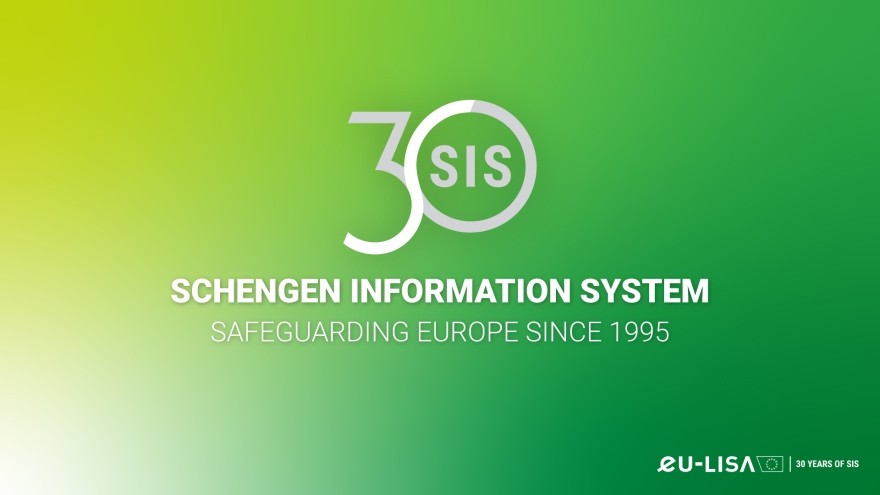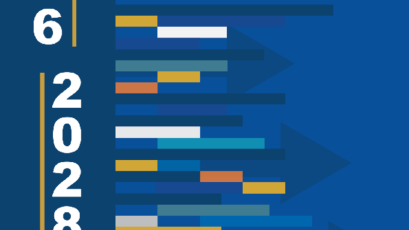Actions

In 2025, Europe marks two major milestones: 40 years of the Schengen Area and 30 years of the Schengen Information System (SIS) — the IT backbone that helps keep this border-free zone both secure and operational.
Since its launch in 1995, SIS has enabled real-time cooperation between national authorities across Europe, safeguarding citizens while supporting one of the EU’s greatest achievements — the freedom to travel without internal borders.
SIS is more than just a system — it is a cornerstone of trust, cooperation, and security in Europe.
A System at the Heart of European Security
SIS is much more than a database — it is an operational tool vital to public safety, judicial cooperation, and migration management across the EU.
Every day, SIS helps authorities locate missing persons, intercept criminals at borders, recover stolen assets, and support cross-border investigations — reinforcing trust between Member States.
At eu-LISA, we are committed not only to keeping SIS running reliably, but also to ensuring it evolves to meet future needs — by expanding capabilities, integrating new technologies, and supporting the EU’s broader interoperability objectives.
What is SIS?
The Schengen Information System (SIS) is Europe’s largest and most frequently used information-sharing platform for border security and law enforcement. It allows participating countries to issue and consult alerts related to:
Missing or wanted persons
Unknown individuals who do not have the right to enter or stay in the Schengen Area
Stolen vehicles, firearms, and identity documents
Objects sought for seizure or as evidence in criminal proceedings
By enabling instant data exchange, SIS helps police officers, border guards, customs officials, immigration authorities, and judicial actors to make fast, informed decisions across national borders.
Who Uses SIS?
As of 2025, SIS is used by 30 European countries, including all EU Member States (with both Ireland and Cyprus now connected), as well as Iceland, Liechtenstein, Norway, and Switzerland.
In addition, EU agencies such as Europol, Frontex, and Eurojust have access to the system to support their operational mandates.
The countries connected to SIS are:
Austria, Belgium, Bulgaria, Croatia, Cyprus, Czech Republic, Denmark, Estonia, Finland, France, Germany, Greece, Hungary, Iceland, Ireland, Italy, Latvia, Liechtenstein, Lithuania, Luxembourg, Malta, the Netherlands, Norway, Poland, Portugal, Romania, Slovakia, Slovenia, Spain, Sweden, and Switzerland.
Across Europe, more than 250,000 authorised users access SIS, including:
Border control staff at air, sea, and land borders
National police, customs, and immigration authorities
Prosecutors and judges
Staff of relevant EU agencies
Each participating country operates a SIRENE Bureau (Supplementary Information Request at the National Entry), which coordinates follow-up actions when SIS alerts are triggered.
How is SIS Managed?
Since 2013, eu-LISA — the EU Agency for the Operational Management of Large-Scale IT Systems in the Area of Freedom, Security and Justice — has been responsible for the management and further development of SIS.
eu-LISA’s tasks include:
Ensuring 24/7 availability and robust system performance
Maintaining strong cybersecurity and resilience to evolving threats
Enhancing SIS functionality in line with EU law and operational requirements
Supporting interoperability with other EU security and migration databases
A major upgrade, known as the SIS Recast, went live in March 2023. It introduced new features to better support counter-terrorism efforts, child protection, and the fight against irregular migration.
SIS in Numbers – 2024 Highlights
According to the SIS Annual Report 2024, the system continues to be a cornerstone of operational cooperation:
Over 15 billion searches conducted
397,804 hits on foreign alerts
More than 93 million alerts stored by year-end
Nearly 7 million biometric searches — a 66% increase from 2023
The Netherlands, Belgium, and France ranked among the most active users
While alerts on individuals make up less than 2% of all entries, they are among the most critical. These include:
Over 626,000 alerts on individuals to be refused entry or stay
More than 570,000 alerts linked to return decisions
Alerts related to arrest warrants, missing persons, and national security threats


